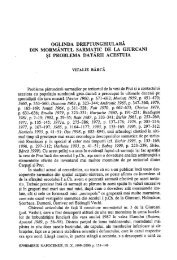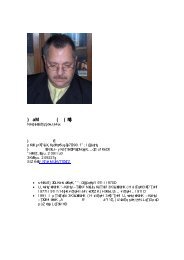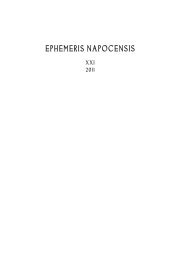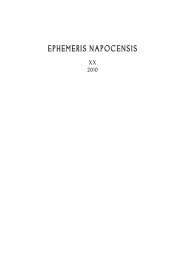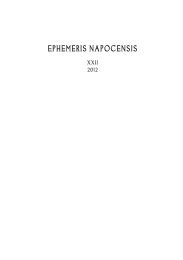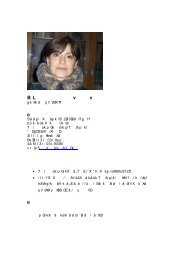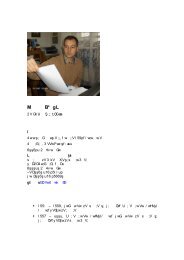EPHEMERIS NAPOCENSIS - Institutul de Arheologie şi Istoria Artei
EPHEMERIS NAPOCENSIS - Institutul de Arheologie şi Istoria Artei
EPHEMERIS NAPOCENSIS - Institutul de Arheologie şi Istoria Artei
Create successful ePaper yourself
Turn your PDF publications into a flip-book with our unique Google optimized e-Paper software.
“Spa” Vignettes in Tabula Peutingeriana. Travelling Ad Aquas<br />
Fig. 2. Geoagiu<br />
Publius Furius Saturninus 27 was also the governor of Dacia Superior in 160 He may<br />
have visited the thermal settlement, since two inscriptions with his name mentioned were found<br />
here 28 . In IDR III/3, 232 Saturninus <strong>de</strong>dicates this votive altar to the health gods, obviously<br />
after a pleasant voyage here at Germisara, and an efficient thermal treatment, as one who entirely<br />
benefited of the healing powers of the thermal waters.<br />
Besi<strong>de</strong> these two important persons, governors of Dacia Superior, monuments mention<br />
other people who visited this place and <strong>de</strong>dicated inscriptions. One of these monuments is IDR<br />
III/3, no. 233 29 . This votive altar, raised for the health of the three emperors (Septimius Severus,<br />
Aurelius Antoninus – Caracalla and Septimius Geta) was placed here from the or<strong>de</strong>r of the governor<br />
of the three Dacian provinces, Lucius Octavius Iulianus around 200–201 AD. The person <strong>de</strong>signated<br />
to fulfill this or<strong>de</strong>r was the comman<strong>de</strong>r of the auxiliary unit of cavalry Ala Asturum.<br />
Aurelius Crhestus, a Roman citizen with Roman gentilicium (Aurelius) and a Greek<br />
cognomen, also <strong>de</strong>dicated an inscription for the health gods 30 . The members of the collegium<br />
Galatarum (citizens who came in Dacia from Asia Minor) <strong>de</strong>dicate an inscription pro salute<br />
imperatoris to Hercules Invictus 31 . The members of collegium Aurariarum, with their representing<br />
27 PISO 1972, 463–471.<br />
28 IDR III/3, 232; IDR III/3, 236.<br />
29 Votive altar, fragmentary kept (broken in the right si<strong>de</strong>), the camp of inscription is <strong>de</strong>teriorated in the center by<br />
a ‘circle’ shape, obviously a mo<strong>de</strong>rn intervention ma<strong>de</strong> by a person who wanted to use the monument for a purpose.<br />
Its dimensions are: 100 × 52 × 46, with letters of 4 cm height. The monument was discovered in a point situated north<br />
of Geoagiu Băi, on the left si<strong>de</strong> of the Geoagiu valley. It was kept for a while in the medieval castle Kuun, where it was<br />
i<strong>de</strong>ntified and copied by A. Fodor. Text: Fortuna[e]/pro salute/aug(ustorum) n(ostrorum) (trium]/L(ucius) Octavius I[u]/lianus<br />
co(n)s(ularis) II[I]/Dac(iarum) fieri iussit/instante … L Ge– (?)/M A N T [p]rae[f(ecto) a]lae/Astu[rum_ _ _ _] B. Translation:<br />
‘To (the god<strong>de</strong>ss) Fortuna, for the health of our three augusti, Lucius Octavius Iulianus, consular of the three Dacia,<br />
or<strong>de</strong>red for this (monument), it took care for (this monument) Aelius Geminus (?), praefectus alae Asturum _ _ _ _’.<br />
30 IDR III/3, 231.<br />
31 IDR III/3, 234.<br />
215



